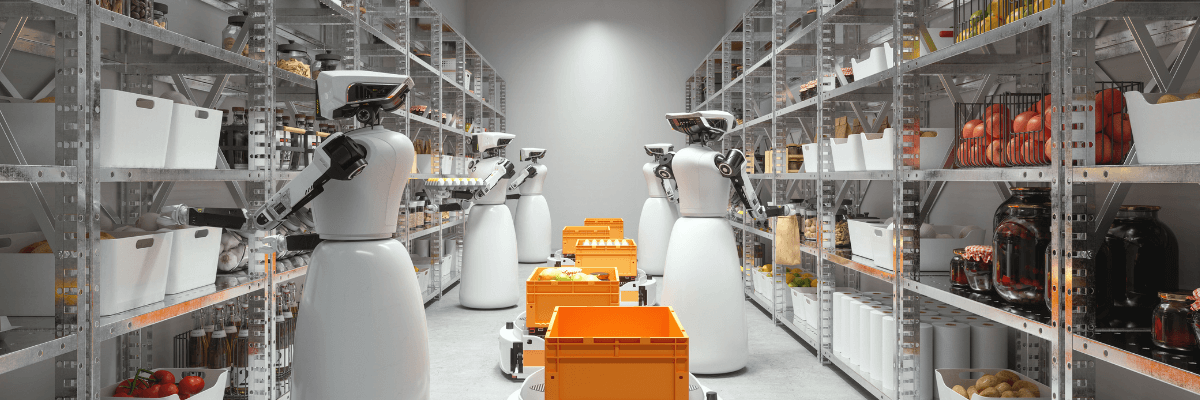In a rapidly transforming trade industry, these are the trends that will prevail on a global level
In an era when what we take for granted is changing at a breakneck speed, it is reasonable for the retail industry to be affected and transformed. On the one hand, the pandemic and on the other, the spectacular technological achievements, bring with them changes that just a few years ago would have belonged to the realm of fantasy. Today, innovation is shaping a new business map and we are taking a sneak peek at the trends that seem to prevail soon in the global Retail industry.
Online shopping: the new normal
The most important change as a result of the pandemic was, of course, online shopping. Now, online shopping should not be considered a trend, but a normality. In the midst of consecutive lockdowns, more and more consumers around the world turned to it, mostly out of necessity. However, dozens of studies around the world, show that this habit is here to stay, regardless of the course of the pandemic. Indicatively, in a recent Verizon survey, 60% of adults reported that they shopped in physical stores before the pandemic, while at the moment this percentage has dropped to 37%.
Online shopping experience, of course, is very different from that in a physical store. There are many consumers who reject the convenience of online shopping for a walk in the shops, where they have the opportunity to see a product, try it and possibly negotiate its price. In the midst of a pandemic, however, their safety and health remains a priority. And this is one of the main reasons why more and more stores are remodeling their premises and giving their customers the option of self-checkout and contactless transactions. According to the same Verizon survey, 1 in 3 adult consumers heard of a contactless credit card or bought something with it for the first time, made a contactless mobile transaction, or used the supermarket home delivery service during the pandemic.
Artificial intelligence is here to stay
Artificial intelligence applications such as the self-checkout are gaining ground. AI (artificial intelligence) will be of great concern to us in the future, but it is already present. If you are wondering how it can be applied in the world of Retail, chances are you have already seen it in action if, for example, you have been served by a chatbot that helped you with your online shopping. There is also the case that you have your own store and a chatbot is already a member of the… staff. Artificial intelligence software that offers automated ways of communicating with the public is constantly finding new scopes, while consumers are to a large extent familiar with the idea of communicating with a bot.
The rise of robots
Although it is impossible to bypass the ethical issues raised by the increasing use of robots in our daily lives, undoubtedly robots have some tempting advantages. The machines do not get tired, they do not fall asleep, they do not make mistakes. Amazon has already made physical stores without sellers a reality, paving the way for hundreds of other retailers with similar ambitions (but probably different budget sizes). Experts are already talking about more than 500 million robots that will serve your orders worldwide in 2025. That means in a few years from now!
Ready for crypto transactions?
Even if robots do not replace (all) the jobs that a human can do, what seems inevitable is the prevalence of cryptocurrencies in the (not so distant) future. You may have heard of Bitcoin and Etherium, but you probably do not know that there are already more than 4,000 different cryptocurrencies out there. Many argue that the commerce sector is already on a path of no return regarding cryptocurrencies, for a number of reasons: safer transactions, lower costs, higher speeds and, above all, the fact that they are preferred by more and more consumers. Sooner or later every store will accept transactions with cryptocurrencies. Do not say that we didn’t warn you!
The tangible reality of VR and AR
We left the application of virtual and augmented reality technologies (VR and AR respectively) to conclude with. Suppose you have a clothing store. First think of filters in apps like Instagram and TikTok. Then think of a mirror in your shop in front of which, the visitor can try on all the t-shirts you have available. Or think of the same visitor trying the clothes you sell, in his living room, in front of his cell phone. It looks like a scene from the future but it’s still a trend that will change retail as we know it. And the future looks more interesting and exciting than ever.
It is obvious that technological developments are taking place rapidly and keeping up with the new trends is a great challenge. This is why we created Retail Innovation Hub. Make sure to subscribe to our newsletter to receive all the latest trends and insights in your inbox monthly!

